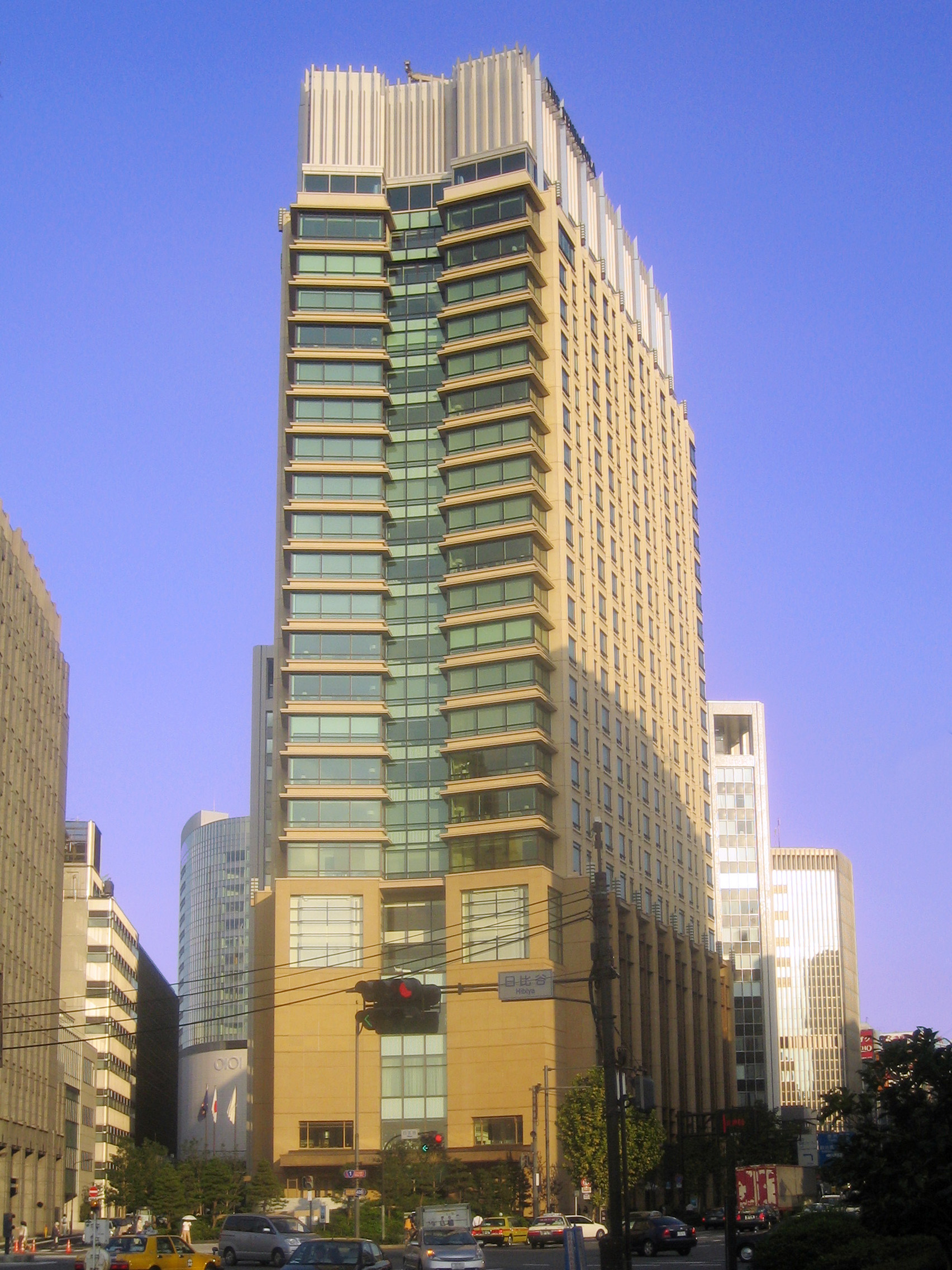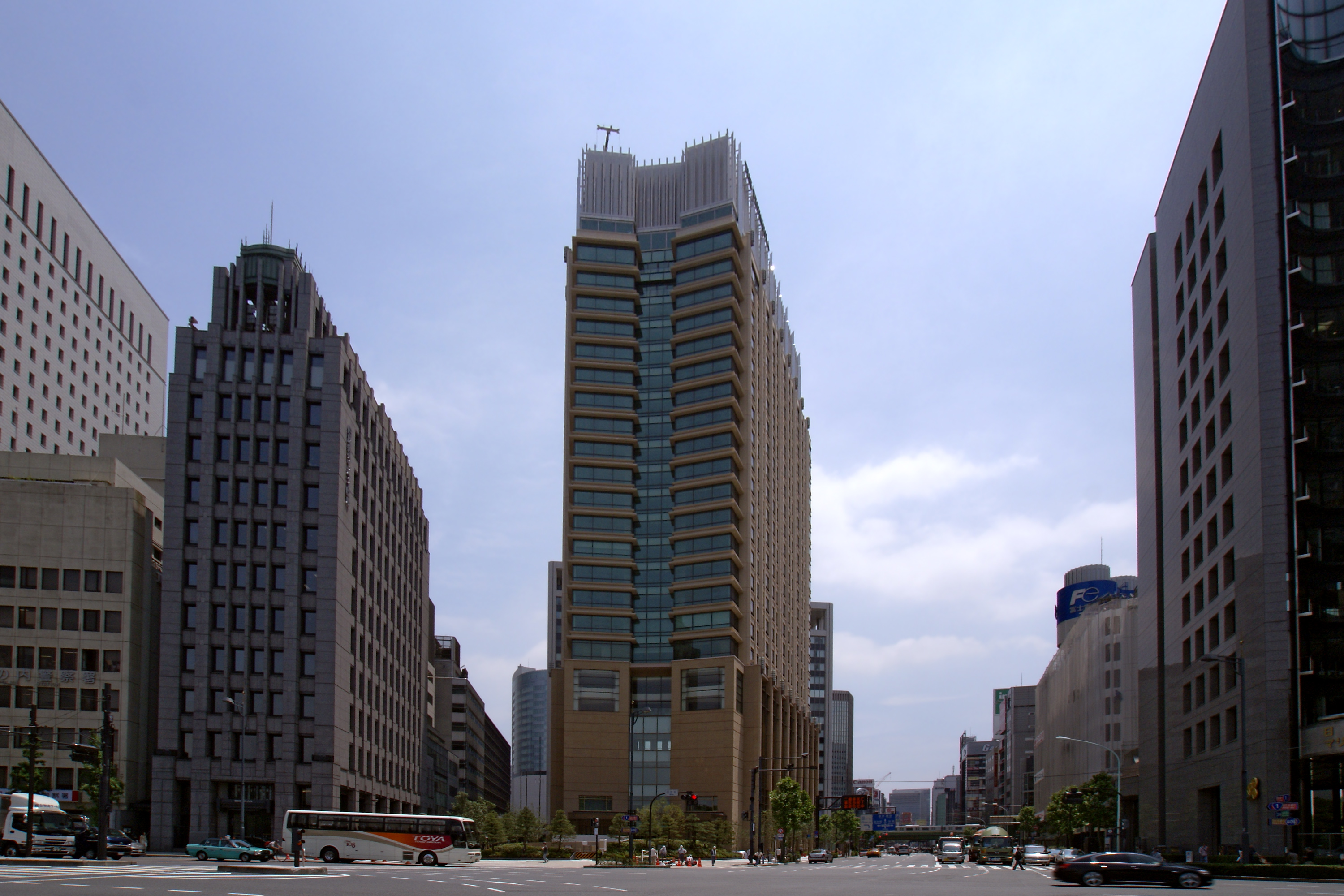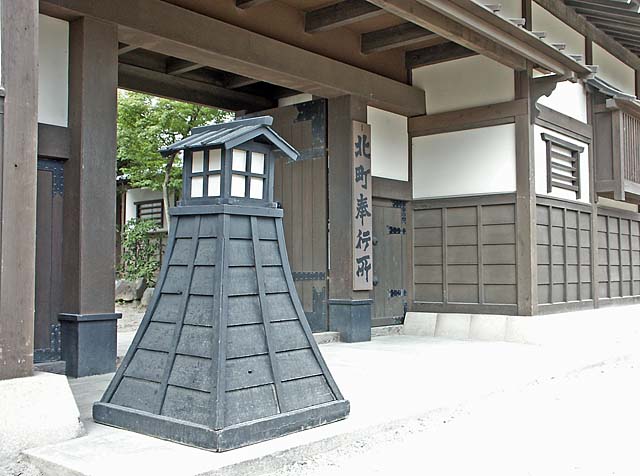|
Yūrakuchō
is a business district of Chiyoda, Tokyo, Japan, situated in between the Ginza and Hibiya Park, southeast of the Tokyo Imperial Palace. The district takes its name from Oda Nagamasu (1547–1622), who was also known as Yūraku (有楽). Oda Nagamasu built his mansion here on land granted by Tokugawa Ieyasu near the Sukiya-bashi Gate of Edo Castle. The place name dates from the Meiji period. Yūrakuchō is served by several train and subway stations, including Hibiya Station (Toei Subway and Tokyo Metro lines) and Yūrakuchō Station (JR East and Tokyo Metro lines). Unlike its tonier neighbor Ginza, Yūrakuchō provides a glimpse of Japanese life from the early postwar period, with its many ''izakaya'' (Japanese-style bars, denoted by their red lanterns known as '' akachochin'') and outdoor ''yakitori'' restaurants, many of which are located near or under the train tracks serving Tokyo's JR Yamanote Line. Because of its easy access to Tokyo Station, Yūrakuchō bars and restauran ... [...More Info...] [...Related Items...] OR: [Wikipedia] [Google] [Baidu] |
Yūrakuchō Station
is a railway station in the Yūrakuchō district of Chiyoda, Tokyo, Japan, operated by East Japan Railway Company (JR East) and the Tokyo subway operator Tokyo Metro. It is Tokyo Metro's fifteenth busiest station in 2016. Lines Yūrakuchō is served by the JR East Keihin-Tōhoku Line and Yamanote Line, and the Tokyo Metro Yūrakuchō Line subway. On Tokyo subway maps, nearby Hibiya Station is marked as an interchange and is linked to Yurakucho by underground passages. Platforms JR East Platforms File:JR Yurakucho Station Platform 1・2.jpg, Platforms 1 and 2 File:JR Yurakucho Station Platform 3・4.jpg, Platforms 3 and 4 Tokyo Metro Platforms File:TokyoMetro-yurakucho-platform.jpg, Yurakucho Line platforms History The elevated JR station opened on June 25, 1910. The subway station opened on October 30, 1974. Chest-high platform edge doors were installed on the Yamanote Line platforms in July 2014, with operation scheduled to begin on 30 August 2014. Passenger ... [...More Info...] [...Related Items...] OR: [Wikipedia] [Google] [Baidu] |
Tokyo Metro
The is a major rapid transit system in Tokyo, Japan, operated by the Tokyo Metro Co. With an average daily ridership of 6.84 million passengers, the Tokyo Metro is the larger of the two subway operators in the city; the other being the Toei Subway, with 2.85 million average daily rides. Organization Tokyo Metro is operated by , a joint-stock company jointly owned by the Government of Japan and the Tokyo Metropolitan Government. The company, founded as a part of then-Prime Minister Junichiro Koizumi's policy of converting statutory corporations into joint-stock companies, replaced the , commonly known as Eidan or TRTA, on April 1, 2004. TRTA was administered by the Ministry of Land, Infrastructure and Transport, and jointly funded by the national and metropolitan governments. It was formed in 1941 as a part-nationalization of the Tokyo Underground Railway and Tokyo Rapid Railway (now both form the Tokyo Metro Ginza Line), although its oldest lines date back to 1927 with th ... [...More Info...] [...Related Items...] OR: [Wikipedia] [Google] [Baidu] |
Hibiya Station
is an underground railway station in the Yūrakuchō district of Chiyoda, Tokyo, Japan, operated by Tokyo Metro and Tokyo Metropolitan Bureau of Transportation, Toei. The area around the station is generally called Hibiya, which is the southwestern corner of the Yūrakuchō district. Hibiya is Tokyo Metro's thirty-third busiest station in fiscal 2019, while its connected station Yūrakuchō Station, Yūrakuchō ranks sixteenth. Lines * Tokyo Metro Chiyoda Line (C-09) * Tokyo Metro Hibiya Line (H-08) * Toei Mita Line (I-08) Yūrakuchō Station on the Tokyo Metro Yūrakuchō Line is connected to Hibiya Station by underground passageways, and it is possible to connect between the two stations without going through the ticket gates. However, the JR platforms at Yūrakuchō are fairly far from Hibiya Station and require a second ticket. Station layout Tokyo Metro platforms } Toei platforms File:Hibiya Line Hibiya Station alternative aug 4 2019.jpeg, Hibiya Line platforms, 20 ... [...More Info...] [...Related Items...] OR: [Wikipedia] [Google] [Baidu] |
Tokyo Station
Tokyo Station ( ja, 東京駅, ) is a railway station in Chiyoda, Tokyo, Japan. The original station is located in Chiyoda's Marunouchi business district near the Tokyo Imperial Palace, Imperial Palace grounds. The newer Eastern extension is not far from the Ginza commercial district. Due to the large area covered by the station, it is divided into the Marunouchi (west) and Yaesu (east) sides in its directional signage. Served by the high-speed rail lines of the Shinkansen network, Tokyo Station is the main inter-city rail terminal in Tokyo. It is the busiest station in Japan, with more than 4,000 trains arriving and departing daily, and the fifth-busiest in Eastern Japan in terms of passenger throughput; on average, more than 500,000 people use Tokyo Station every day. The station is also served by many regional commuter lines of Japan Railways, as well as the Tokyo Metro network. Lines Trains on the following lines are available at Tokyo Station: * ** Tōhoku Shinkansen ** ... [...More Info...] [...Related Items...] OR: [Wikipedia] [Google] [Baidu] |
Hibiya
is a colloquial name for a neighborhood of Chiyoda Ward in Tokyo. The area along Hibiya Street ( National Route 1) from Yūrakuchō to Uchisaiwaichō is generally considered Hibiya district. Administratively, it is part of the Yūrakuchō district. There is no actual administrative district in Chiyoda called "Hibiya" but the name is used in some local place names such as Hibiya Park and Hibiya Station (administratively in Yūrakuchō). Hibiya was part of the old Kōjimachi ward in Tokyo City, before it was transformed into a metropolis. Etymology The outskirts of this district are reclaimed from the ocean, and the "hibi" of Hibiya is derived from the facility for the laver of nori made of bamboo, whose name is also "hibi". This effectively makes the word an ateji, kanji characters used to phonetically represent native Japanese words. History In the era of Tokugawa shogunate, the Tokugawa bakufu worked out of Edo castle and the area surrounding Edo castle was developed a ... [...More Info...] [...Related Items...] OR: [Wikipedia] [Google] [Baidu] |
Ginza
Ginza ( ; ja, 銀座 ) is a district of Chūō, Tokyo, located south of Yaesu and Kyōbashi, west of Tsukiji, east of Yūrakuchō and Uchisaiwaichō, and north of Shinbashi. It is a popular upscale shopping area of Tokyo, with numerous internationally renowned department stores, boutiques, restaurants and coffeehouses located in its vicinity. It is considered to be one of the most expensive, elegant, and luxurious city districts in the world. Ginza was a part of the old Kyobashi ward of Tokyo City, which, together with Nihonbashi and Kanda, formed the core of Shitamachi, the original downtown center of Edo (Tokyo). History Ginza was built upon a former swamp that was filled in during the 16th century. The name Ginza comes after the establishment of a silver-coin mint established there in 1612, during the Edo period. After a devastating fire in 1872 burned down most of the area, the Meiji government designated the Ginza area as a "model of modernization." The governme ... [...More Info...] [...Related Items...] OR: [Wikipedia] [Google] [Baidu] |
Yamanote Line
The Yamanote Line ( ja, 山手線, Yamanote-sen) is a loop service in Tokyo, Japan, operated by the East Japan Railway Company (JR East). It is one of Tokyo's busiest and most important lines, connecting most of Tokyo's major stations and urban centres, including Marunouchi, the Yūrakuchō/ Ginza area, Shinagawa, Shibuya, Shinjuku, Ikebukuro, and Ueno, with all but two of its 30 stations connecting to other railway or underground (subway) lines. Internally JR East refers to the "Yamanote Line" as the quadruple-track corridor between Shinagawa and Tabata via Shinjuku. The corridor consists of a pair of tracks used by Yamanote local trains and another parallel pair of tracks called "the Yamanote Freight Line" used by the Saikyō and Shōnan-Shinjuku line trains, some limited express services, and freight trains. In everyday usage, branding on maps and station signage, the "Yamanote Line" refers to the local service running the entire line looping between the Yamanote corrid ... [...More Info...] [...Related Items...] OR: [Wikipedia] [Google] [Baidu] |
Oda Nagamasu
was a Japanese daimyō and a brother of Oda Nobunaga who lived from the late Sengoku period through the early Edo period. Also known as or , the Tokyo neighborhood Yūrakuchō is named for him. Nagamasu converted to Christianity in 1588 and took the baptismal name of John. Biography His childhood name was Gengorō (源五郎) and he was the 11th son of Oda Nobuhide. In 1574, he received the Chita District in Owari and the construction of Ōkusa Castle. Later, he was commissioned to serve Oda Nobutada in the Siege of Iwamura (1575), Siege of Shigisan (1577), Siege of Itami (1579) and also Siege of Takato (1582). Nagamasu was an accomplished practitioner of the Japanese tea ceremony, which he studied under the master, Sen no Rikyū. He eventually started his own school of the tea ceremony. In June 1582, during the incident at Honnō-ji, he was one of the vassals of Nobutada in Nijō Castle, he was able to survive and fled to Gifu Castle. In 1584, he then joined Oda ... [...More Info...] [...Related Items...] OR: [Wikipedia] [Google] [Baidu] |
Edo Machi-bugyō
were magistrates or municipal administrators with responsibility for governing and maintaining order in the shogunal city of Edo. Machi-bugyō were samurai officials of the Tokugawa shogunate in Edo period Japan. Appointments to this prominent office were usually ''hatamoto'',Cunningham p. 39./ref> this was amongst the senior administrative posts open to those who were not ''daimyōs''.Beasley, William G. (1955). ''Select Documents on Japanese Foreign Policy, 1853–1868'', p. 325. Conventional interpretations have construed these Japanese titles as "commissioner", "overseer" or "governor." During the Edo period, there were generally two hatamoto serving simultaneously as Edo ''machi-bugyō''. There were two Edo ''machi-bugyō-sho'' within the jurisdictional limits of metropolitan Edo; and during the years from 1702 though 1719, there was also a third appointed ''machi-bugyō''.Cunningham, Don. (2004) ''Taiho-Jutsu: Law and Order in the Age of the Samurai'', p. 39./ref> The Edo ... [...More Info...] [...Related Items...] OR: [Wikipedia] [Google] [Baidu] |
Chiyoda, Tokyo
is a special ward located in central Tokyo, Japan. It is known as Chiyoda City in English.Profile ." ''City of Chiyoda''. Retrieved on December 28, 2008. It was formed in 1947 as a merger of and wards following 's transformation into Tokyo Metropolis. The modern Chiyoda ward exhibits contrasting |
The Peninsula Tokyo
The Peninsula Tokyo is a 24-story luxury skyscraper hotel located in Yurakucho, Chiyoda, Tokyo, Japan. The hotel is operated by The Peninsula Hotel Group, and is the only Peninsula branded Hotel in Japan. It is owned by Hong Kong and Shanghai Hotels. In January 2012, the Peninsula Tokyo was awarded as the second best hotel in the world by American travel magazine Travel + Leisures annual '500 Best Hotels' List, only being beaten by the Mandarin Oriental, Tokyo, also in Japan. The Spa at the hotel was also awarded the 2011 Readers Choice award for favourite Spa in Japan by Spa Finder USA. The hotel is also the first free-standing luxury hotel to be built in Tokyo in more than 10 years with direct street access, and it is described as 'international in design, but Japanese by inspiration.' The hotel is involved in Breast Cancer awareness and proudly supports the Japan Breast Cancer Screening Society. Restaurants and bars *The Lobby *Hei Fung Terrace *Sushi Wakon *Peter *The Penins ... [...More Info...] [...Related Items...] OR: [Wikipedia] [Google] [Baidu] |
Kokyo
The is the main residence of the Emperor of Japan. It is a large park-like area located in the Chiyoda district of the Chiyoda ward of Tokyo and contains several buildings including the where the Emperor has his living quarters, the where various ceremonies and receptions take place, some residences of the Imperial Family, an archive, museums and administrative offices. It is built on the site of the old Edo Castle. The total area including the gardens is . During the height of the 1980s Japanese property bubble, the palace grounds were valued by some to be more than the value of all of the real estate in the U.S. state of California. History Edo castle After the capitulation of the shogunate and the Meiji Restoration, the inhabitants, including the Shōgun Tokugawa Yoshinobu, were required to vacate the premises of the Edo Castle. Leaving the Kyoto Imperial Palace on 26 November 1868, the Emperor arrived at the Edo Castle, made it to his new residence and renamed it ... [...More Info...] [...Related Items...] OR: [Wikipedia] [Google] [Baidu] |









